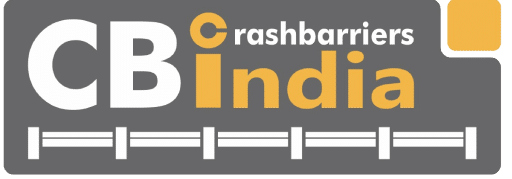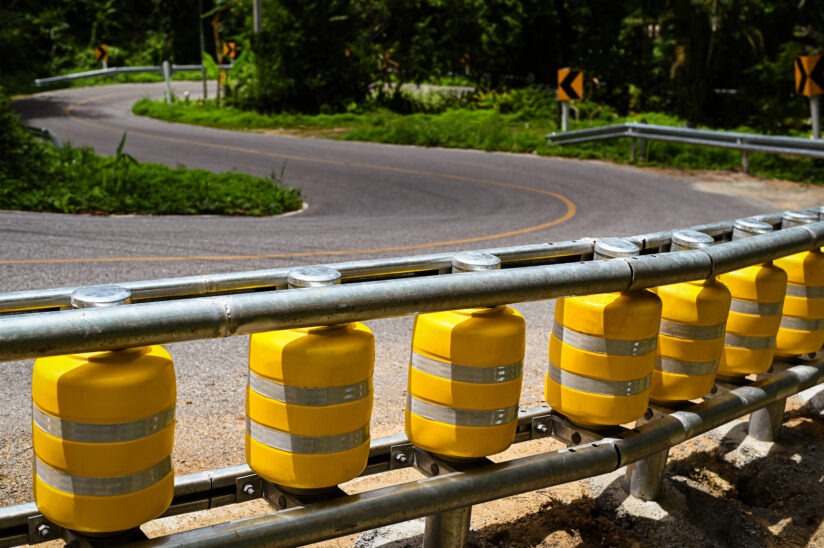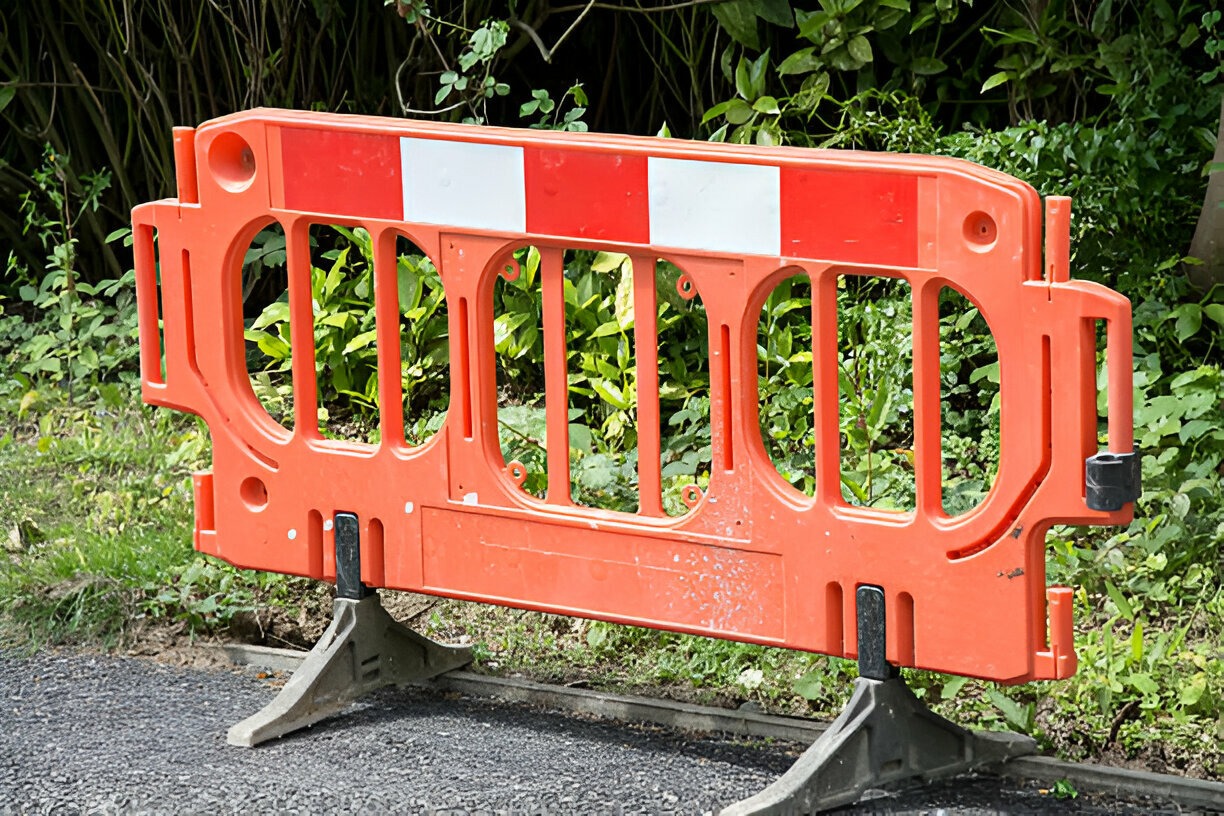Crash Barrier Installation Made Easy – Get Expert Support Today
The term crash barrier refers to the fence or barrier that is placed at the edge of the road. It separates the two sides of a larger road or is built to avoid people falling to the dangerous place. The primary object of crash barriers is to minimise the damage to the people when any accidents occur at the roads and colliding with one another. They work as shields between vehicles and obstruction, reducing the impact of accidents. Crash barrier installation is a necessary part of road safety in modern infrastructure
One of the most important features of Road safety barriers is protecting the life and limbs of a person when a road accident happens. Through strategically positioned crash barriers at the edge of roads can safeguard many lives.
Crash barriers are essential for governments, private sectors, and construction firms to enhance road safety, protect infrastructure, and prevent accidents. They are used on highways, bridges, industrial areas, and construction sites to control vehicle movement, reduce impact during collisions, and ensure compliance with safety standards and regulations.
This article covers the essentials, the types of crash barriers, their uses, and importance for different scenarios. Here we go!
Types of Crash Barriers
- W-Beam Crash Barriers
- Thrie-Beam Crash Barriers
- Cable Barriers
- Concrete Barriers
- Portable vs Permanent Barriers
W-Beam Crash Barriers
W Beam barriers, also known as guardrails, are critical roadside safety systems made from high-strength steel, designed to absorb impact and prevent vehicles from veering off roads. Their distinct “W” shape ensures controlled deformation during collisions, reducing injury risks and enhancing road safety.
W Beam crash barriers, also called guardrails, are one of the important roadside safety system that safeguard the safety of the people. These are made from high steel iron, manufactured to reduce road accident impact and prevent vehicles from swinging off roads. Their specific “W” shape ensures controlled deformation during a collision, reducing the risk of injury and increasing road safety. These barriers are widely used on highways, urban roads, and industrial zones for their durability, impact resistance, and compliance with international safety standards.
Thrie-Beam Crash Barriers
Thrie Beam Crash Barriers are advanced metal safety systems with a three-wave design, providing durable strength and impact resistance in comparison to traditional barriers. It is manufactured to absorb and divert collision energy, reduce accident severity and protect vehicle occupants. Commonly used on highways, flyovers, hilly terrains, and other dangerous areas, these barriers ensure enhanced road safety.
Cable Barriers
A cable barrier, which is also known as a wire rope safety barrier (WRSB), is a roadside or median safety system designed to prevent vehicles from leaving the roadway and colliding with hazardous obstacles or terrain. Comprising steel wire ropes mounted on weak posts, these barriers function by capturing and redirecting errant vehicles, thereby reducing the severity of accidents. Their flexibility allows them to absorb impact energy and dissipate it laterally, minimizing forces transmitted to vehicle occupants. Cable barriers are cost-effective compared to concrete barriers and are increasingly used, especially in highway medians, to prevent cross-median crashes.
Concrete Barriers
These barriers are F shaped barriers. They are made by pouring a concrete layer over a metal rod structure. Their strong shape and ability to sustain even severest crashes is very appreciated by many organisations.
Key Benefits of Installing Crash Barrier
- Enhanced Road Safety: When it comes to road safety crash barriers are one to play the most crucial role while in an accident. Whenever an accident happens on the road it could lead to mass fatal injuries and even deaths in some of the scenarios. To prevent this outcome we play guardrails at the edge and center of road and highways in order to prevent people from falling from cliffs or higher places like highways. On the other hand, the center divider is also one of the important factors that help in dividing the road traffic and saving people from death scenarios.
- Traffic Management and Lane Discipline: Crash barriers when used as divider helps in traffic management and divide the lane in one way or two ways. These are essential to prevent accidents between both lanes and prevent people from going to the wrong sides.
- Protection for Pedestrians and Road Workers: safety barriers help in protection of pedestrians and workers who work on road projects whether it’s about road development, metro construction and others.
- Reduction in Accident Severity: Crash barriers are needed to prevent accidents on road or any other area where mobility of vehicle happens on daily basis. These barriers reduce the impact of accidents while absorbing the force exerted by accidents. It helps in safeguarding the limbs and lives of peoples.
- Prevent accidents at night: Some of the crash barriers come with reflectors on them which shine at night that prevent drives from dangerous zones. It also helps them to guide how the road is going further which leads the driver safely to their destination.
Crash Barrier Design Considerations
- Road Type and Traffic Volume: There are different types of crash barriers in road safety. So, in order to set up the crash barrier which can last long ensure two things. The first one is the type of road on which we are going to install the road safety barrier and the second-one is the volume of traffic it holds per day. A road safety barrier is only needed to be installed on the location where mobility of vehicle happens in mass volume.
- Impact Absorption Capabilities: After the inspection of road type we need to select the crash barrier which is best suitable for that particular road and prevent accidents. They absorb the impact of an accident and resist it in the long run.
- Weather and Environmental Factors: We not only need a crash barrier that absorbs most of the impact of the accident but we need a crash barrier that is durable and can handle the passage of time. It should be able to withstand any weather and environmental conditions in order to be cost-effective.
- Aesthetic Integration with Surroundings: A road safety barrier is not only essential but also look appealing to the eyes.
Conclusion
Crash barriers are more than just roadside structures—they are life-saving installations that play a crucial role in minimizing damage during accidents, managing traffic flow, and protecting both motorists and pedestrians. Whether it’s a bustling highway, a bridge, or a construction zone, the right crash barrier setup can drastically reduce the risk of severe injuries and infrastructure damage.
To ensure maximum safety and compliance with national and international standards, it’s essential to choose the right type of barrier based on road type, traffic volume, and environmental factors. Proper Crash barrier installation which is done by experienced professionals guarantees the effectiveness and longevity of these protective systems.
If you’re planning to install crash barriers, don’t leave it to chance. Seek expert assistance to evaluate your site, select the ideal solution, and ensure flawless execution.
Protect lives, reduce risks, and enhance road safety—get expert support for crash barrier installation today!




Add Comment